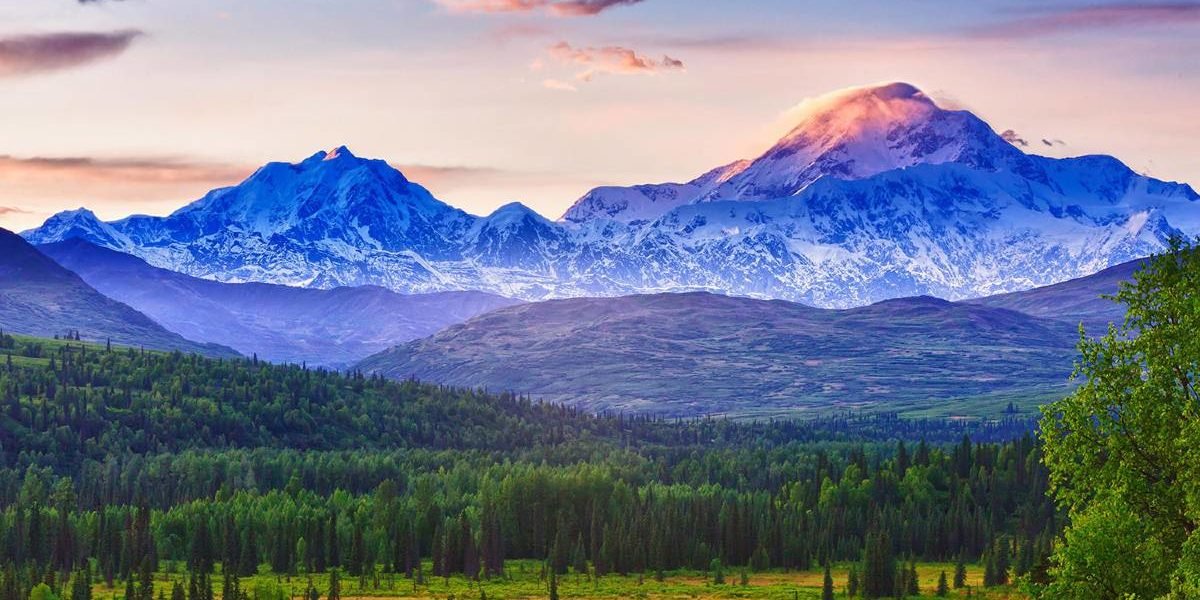
How This Former Air Force Forecaster Fell in Love with Alaska
Michael DeYoung wasn’t always a wildlife and adventure photographer.
“What brought me to Alaska was orders from the United States Air Force,” he said.
DeYoung had filed the state on his “dream sheet,” requesting it as a location he’d like to be stationed. After eight years of active duty, his wish was granted. DeYoung and his wife Lauri drove up as newly-weds to start a life in the “Last Frontier.” Living in Anchorage, they found the beautiful dichotomy of a large city with immeasurable wilderness surrounding it.
“Right out [Anchorage’s] back door is wilderness where you can take off with a backpack and walk for the rest of your life and never see somebody,” DeYoung said.
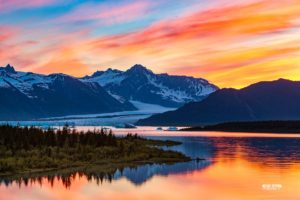
Alaska is easily the USA’s largest state at 586,412 square miles– that’s bigger than Texas, California and Montana combined. And yet, a majority of the land is unpopulated and remote. Even the state capital city, Juneau, is inaccessible by road.
“The sheer scale and size intimidates people, but it’s actually pretty easy to operate in,” DeYoung said. “What Alaska doesn’t have in trails, it makes up for in navigable rivers. Alaska has hundreds and hundreds of navigable rivers that you could float for a week to a month and use that as a vehicle to explore the wilderness.”
Another favorite means of exploration is via floatplane. DeYoung said that it’s common amongst Alaskans to be dropped off somewhere new and either find your way to a road or to a pre-arranged pick up location.
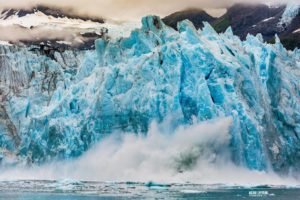
Alaska’s Wild Photography Scene
After some years working for the Air Force as a forecaster, DeYoung began to get involved with the photography community in the area, eventually exiting the Air Force to pursue that work full-time.
When it comes to photography in Alaska, there is no shortage of stunning natural subjects. From the mountain ranges to glaciers to wildlife, Alaska is a photographer’s paradise. In the lower 48 states, most popular photo destinations are just too crowded much the year. In Alaska, escaping the crowd isn’t a problem. Rather, access and knowledge of the land is usually the biggest hurdle to overcome.
“You have to know what locations produce the most striking photos and you have to be there when the light is good,” DeYoung said. “My advantage is, being a former meteorologist and forecaster, I can predict narrow windows of good light that others are going to miss when they listen to general public forecasts.”
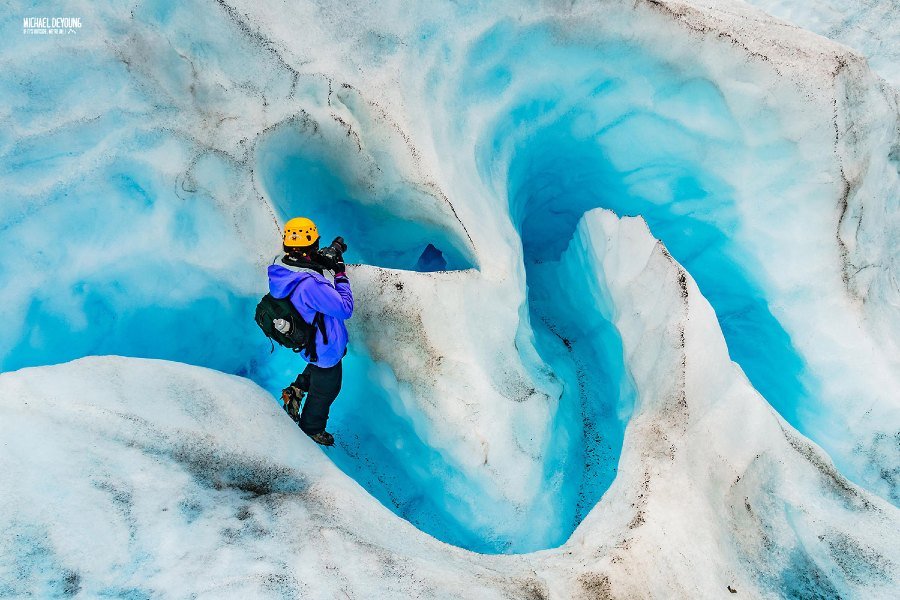
Another thing is access– Many of Alaska’s best locations are not road accessible. Do you have access to a float plane or boat? Utilizing air or water taxis and charters in Alaska is just a way of life. In-state, off road transportation is expensive but necessary for access.
Although a challenge, the lack of access to these great shots adds value to the photography experience as well: Even in the Instagram age, outside of a few very popular bear viewing locations, you won’t find crowds in Alaska. The state’s wide open spaces ensure plenty of wildlife viewing spots and remote adventures for everyone, even as the state’s popularity continues to steadily pick up.
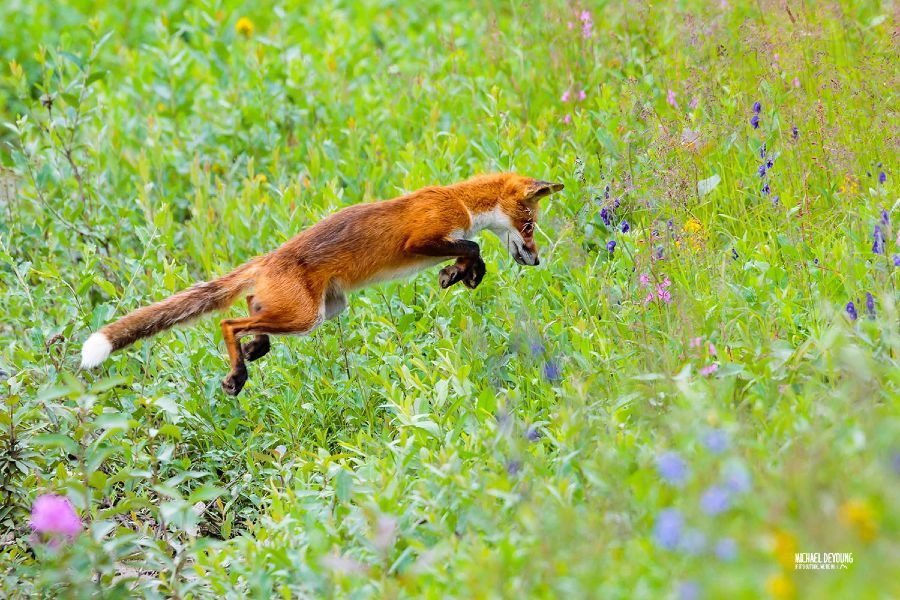
The Realities of Seasonal Affective Disorder
So why isn’t everyone rushing to move to the Last Frontier? There are a few sizable cons to measure on the other hand of the numerous pros.
For DeYoung, the decision to leave was a result of seasonal affective disorder.
“When I moved to Alaska, I didn’t really think [seasonal affective disorder] would affect me,” DeYoung said. “But after so many years there– particularly after I got out of the active duty Air Force and started getting into photography– you realize that you have to address that and deal with it and face it. That’s what forced us to leave was the psychological impact of lack of sunlight that you get up there in the winter.”
Due to its northern position on the equator, Alaska receives limited sunlight in the winter months, usually about November to January. In Anchorage, the shortest day of the year consists of about five hours of sunlight. Further north in Alaska’s Arctic region, there are even towns that experience 67 days of darkness.
Although no longer living in Alaska, DeYoung’s days of adventure photography are far from behind him. Today, Michael and Lauri run their travel and adventure photography team from their 100 percent solar-powered home in Taos, New Mexico. They still return to Alaska every year, sometimes even in winter, to lead photography workshops, tours and their own backcountry adventures.
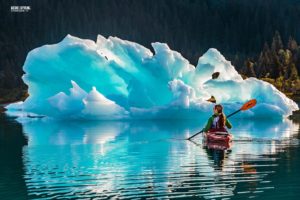
Sample Itineraries:
Interested in your own Alaskan adventure? Check out these sample itineraries in Alaska:
Luxury Alaska Adventures on the Kenai Peninsula
